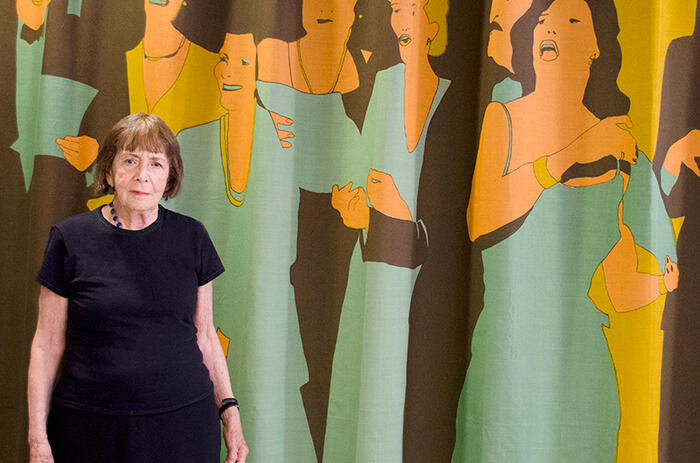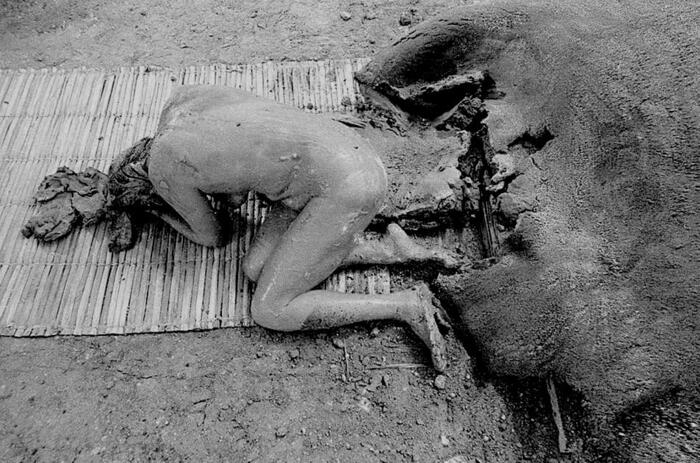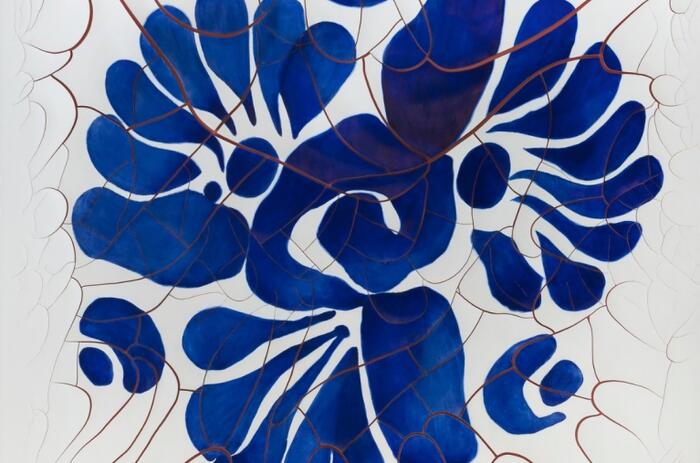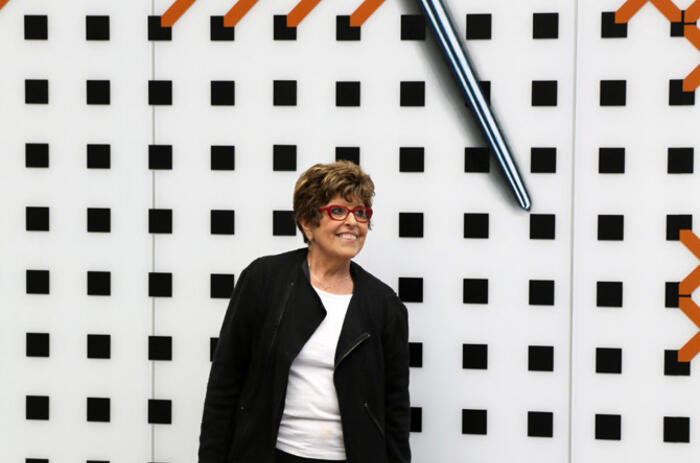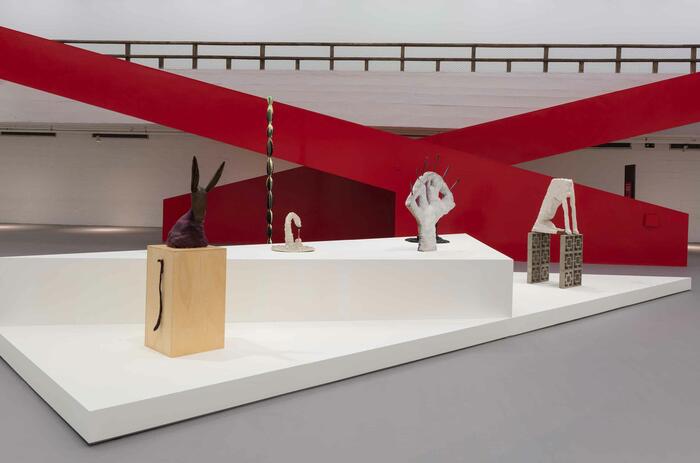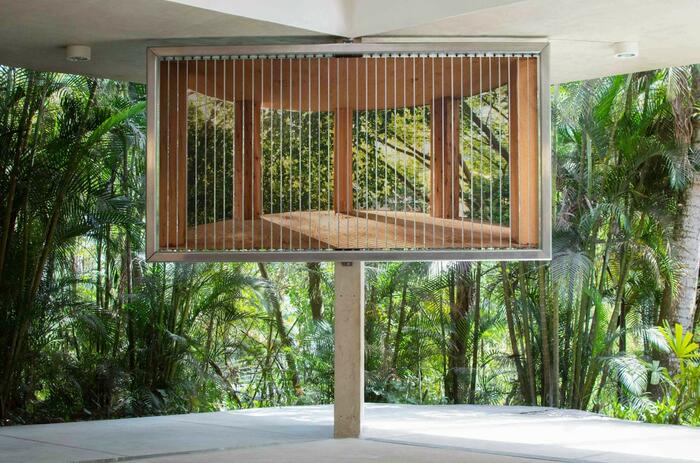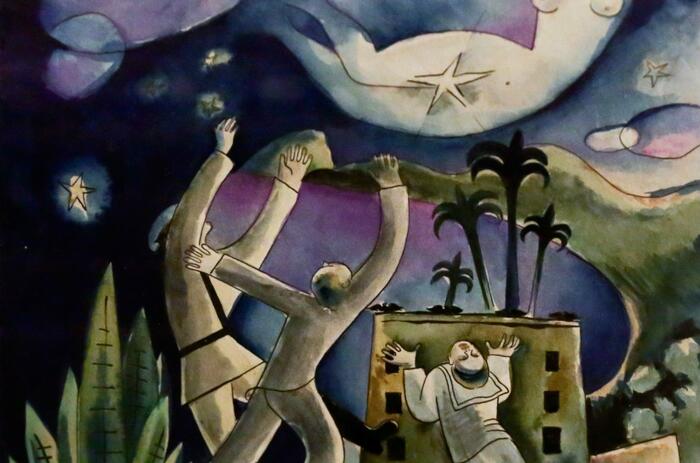MODERNITIES IN MOVEMENT - TARSILA, DI CAVALCANTI AND THE GOMIDE-GRAZ FAMILY
The narratives of the Brazilian avant-garde in the arts go through an intense revision. Due to the centenary of the Week of 22, the emblematic event that in the thesis launched the foundations of modernity through different languagesand fields of activity in the country, three exhibitions currently on the billboard rotate and bring new elements from the production of two icons of Modernism in Visual Arts - Tarsila Do Amaral (1886-1973) and Di Cavalcanti (1897-1976). In addition, they cast more emphatic lights on three not-so-famous characters within the journeys within the movement and the modernist winds: Antonio Gomide (1895-1967), John Graz (1891-1980) and Regina Gomide-Graz (1897-1973) .
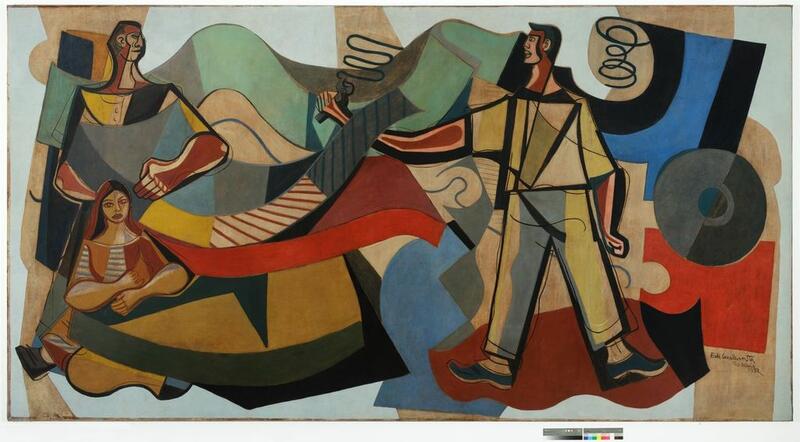
The Week of 22 took place in February of that year in the aristocratic municipal theater of São Paulo, a privileged locus for political, social and economic elites (especially from coffee) to show their symbolic power, providing big names and prestigious shows from Europe, for example. At the same time, the first decades of the 20th century were optimized to the old provincial city - at that time the federal capital was Rio de Janeiro, which had been the refuge of the Portuguese royal family and breathed prosperity - with continuous flows of immigrants landing in the city and technological advances being inserted into the urban daily life, among other news. Thus, an event that brought together exhibitions and literary-musical presentations of young names, mostly far from what was consumed in conservative circles in the city at that time, came to mark an epoch in the history of Brazilian culture.
Tarsila out of the closet
In national Modernism, Tarsila Do Amaral was a prominent figure and, to this day, new perspectives of his work arise. The recent exhibitions at the MOMA in New York in 2018 and at MASP (São Paulo Art Museum) were widely visited (especially that of SP) and obtained critical resonance. Tarsila Popular, the solo show at the São Paulo museum curated by Adriano Pedrosa and Fernando Oliva in 2019, brought more solid opinions about the painter's focus on popular types, suburban landscapes and interiors and colors that are not considered elegant, at least in the predilection of the medium of the visual arts in those years. And it should be highlighted that Abaporu (1928), one of his most famous displays, belongs to the Costantini collection, exhibited at the Malba in Buenos Aires. Despite being a pioneer in the visual modernity of the country, Tarsila was not in the Week of 22, although he has always been associated with the local avant-garde.
Tarsila: studies and notes brings together some 200 drawings by the artist from São Paulo in the renovated space of the Marcos Amaro art factory, in Itu, the state interior. Amaro exhibits his ever-expanding collection in the old spinning and cotton mills, which cover an area of 25,000 m² and originally date from 1910.
And the story of the historical set of drawings, dating from 1919 to the 1940s, and the return of it to light, literally, is incredible. Since the early 1970s, they belonged to a collector in the financial circuit. The lot had been exhibited in a great retrospective of the artist, in 1969, at the Carioca MAM and MAC-USP, precisely with the curatorship of Aracy Amaral. When the Tarsila Raisonné catalog was produced, between 2005 and 2007, the experts contacted the owner of the precious compilation, who denied access. In 2017, the collector's widow wanted to sell them and said the graphic work had been locked in her husband's closet for nearly five decades, until his death.
That is why it is almost a miracle that this group of work is exhibited in its entirety, the focus of a careful restoration, which allows the contact of the new generations of the public and the critics with an artist of such magnitude. This redemption provides the observation and understanding of the genesis of the work and the phases of production in an almost procedural way, through papers, notebooks and camera works full of skill, technical prowess and charm.
The pieces in this sense are the series in which the artist addresses progressive geometric shapes during classes with Albert Gleizes (1881-1953) during 1923, the exceptional Portrait of a Woman III, from the same year, made under the direction of Fernand Léger (1881-1955), and the study of the fundamental La Negra, also from 1923. The dozens of drawings of the historic cities of Minas Gerais, from 1924, and the trip to the Middle East, from 1926, sometimes take on extreme synthesis of the lines, which does not interfere with the plastic quality, on the contrary. Watercolors, graffiti and colored inks of somewhat fantastic animals dating from 1925 and drawings from the anthropophagic phase of 1929 and 1930 deserve further analysis.
Exhibition: Tarsila - Studies and notes
Curators: Aracy Amaral and Regina Teixeira de Barros
Where: Fama - Marcos Amaro Art Factory
No scheduled closing date
Di Cavalcanti beyond the party
The festive universe of Carioca Di Cavalcanti was duly celebrated as one of the exponents of Brazilian modernism. Author of the poster and catalog for the Week of 22, widely considered from the perspective of an approach to cubism and surrealism, among other currents, the artist gains the contours of a work with strong links to public art and socio-political muralism. The curator Ivo Mesquita (ex-São Paulo Biennial) signs this current viewpoint in Di Cavalcanti, Muralista, which presents 23 works at the Tomie Ohtake Institute, in São Paulo, made between 1925 and 1970.
In addition to gathering high-value pieces -with insurance and high transport costs, which are therefore more difficult for collectors to provide-, it has been largely invisible and on a large scale; the main asset developed by the curatorship is to consolidate the reasons and dialogues for Di’s creating of murals and panels and what he knew about the muralist tradition of Mexico.
Mesquita concludes that the most likely hypothesis for the absorption (not a derivation) of this muralism in the North American country was the visit to the Mexican pavilion at the Universal Exhibition in homage to the I Centennial of the Independence of Brazil, in Rio de Janeiro, in 1922. The central figure in the space was Roberto Montenegro Nervo (1885-1968), creator of murals with a more symbolic and romantic tone than his famous peers. "The young Di Cavalcanti may well have got together with Montenegro during that exciting winter in Rio de Janeiro since they shared the camaraderie that cames actually talking about their art, Revolution, y otras cositas más" writes the curator. "And admired their work’s outcome."
In the São Paulo exhibition, Di's originality is attested in the framework of a non-reverent collectivity in murals and panels, in contrast to the current abstraction in public works of this type and with the eloquent tone in support of the then better known name Portinari (1903-1962). "A libertine and hedonistic troubadour of miscegenation, Di Cavalcanti was the painter who shed light on invisible people´s lives, a workforce pushed out to the poor outskirts of town on the bottom rung of Brazil´s unfailingly unequal society", Mesquita evaluates. Thus, there is a critical rediscovery of the Samba and Carnaval murals, both from 1929-30, today at the João Caetano Theater in Rio. From this phase on, the surprising canvases Serenata (1925) and Devaneio (1927) are presented. In the continuation of the exhibition there are also large and attractive pieces, such as Trabalhadores (two, from 1952 and 1955), Feira Nordestina (1950s) and Brasil em 4 Phases (1965).
Exhibition: Di Cavalcanti, Muralista
Curator: Ivo Mesquita
Where: Tomie Ohtake Institute
Until 10/17/2021
-
Emiliano Di Cavalcanti- Serenata, 1925 - Óleo sobre tela - 85x120cm - Coleção Particular, SP
-
Emiliano Di Cavalcanti - Devaneio, 1927 - Óleo sobre tela - 99,5x156cm - Coleção Particular, RJ
-
Emiliano Di Cavalcanti – Trabalhadores (Painel Probel), 1955 - Óleo sobre tela - 190 x 420 cm - Coleção Particular, Gentileza Galeria Sur
-
Figuras, 1956 - Óleo sobre tela - 2,16 x 1,60 m - Coleção particular
Gomide-Graz: in search of total art
Another interesting review of the modernist winds in Brazil has an important base in Switzerland. At the Geneva School of Fine Arts, the Swiss John Graz and the São Paulo artists Antonio Gomide and Regina Gomide Graz developed their studies and in the 1920s joined the modernist group, participating with John in the Week of 22 with ten canvases - two of which are now featured in Desafios da Modernidade and, on display just at the beginning of the exhibition route, one of the exhibition's highlights. Cipreses en Toledo (Paisaje de España), 1916, and Paisaje de España (Puente de Ronda), 1920, are rare testimonies of the best that there was in pictorial terms at the event.
The selection of 80 works is made after in-depth research by Maria Alice Milliet (former director of the Pinacoteca do Estado de SP and MAM-SP) in public and private collections, often decades without being exhibited. In addition to giving prominence to artists with consistent poetics, but far from the exhibition spaces, the curatorship achieves the objective of presenting them as artisans of what could be called total art. Today they would be praised as forerunners of a multiplicity of media, research and approaches.
This hybridism of the beginning of the century was synthesized in the art deco work by the trio and in the variety of pieces they made: paintings, drawings, tapestries, furniture, lamps, reliefs. It is, therefore, the integration of the arts in everyday life, in domestic environments and intertwined with modern architecture. Not surprisingly, it is the inaugural exhibition of Gregori Warchavchik's Modernist House (1896-1972), in the Pacaembu neighborhood of São Paulo, in 1930, that really values the Graz couple.
The curatorship succeeds in exploring the versatility of the Gomide-Graz family through the reconstitution of interior environments, far from being a scenographic attraction. The audiovisual shown at the end of the exhibition is also essential, in which one can have contact with the documentary material about the rich and daring residences of the time -in general, of the rising industrialists- with all these arts really integrated. An indispensable look at Brazilian modernity.
Exhibition: Challenges of Modernity: The Gomide-Graz Family in the 1920s and 1930s
Curator: Maria Alice Milliet
Where: MAM-SP
Until 8/15/2021
-
Índios, déc. 1930, Regina Gomide Graz - Acervo Museu de Arte de São Paulo Assis Chateaubriand - Doação Fulvia Adolpho Leirner, 2018 - Fotografia: MASP
-
Sem título (figura feminina_3), s.d, Regina Gomide Graz - Tecido e aplicação de tecidos (costura manual e à máquina), bordado e Pintura - Coleção Ivani e Jorge Yunes - Fotografia: Estevan dos Anjos
-
Mesa, início déc. 1930, Antonio Gomide - Madeira e metal - Coleção Carolina e Patrice Etlin - Fotógrafo: Romulo Fialdini
-
O encontro, déc. 1930, Antonio Gomide - Óleo sobre tela - Coleção particular - Fotógrafo: Bruno Macedo
-
Tapete, déc. 1930, Regina Gomide Graz – Lã - Coleção Fulvia e Adolpho Leirner - Fotógrafo: Isabella Matheus
-
Vaso, déc.1930, Antonio Gomide – Cimento - Acervo do Museu de Arte de São Paulo Assis Chateaubriand - Doação Fulvia e Adolpho Leirner, 2018 – MASP - Fotógrafo: Romulo Fialdini

